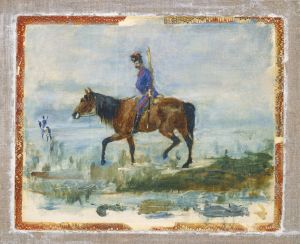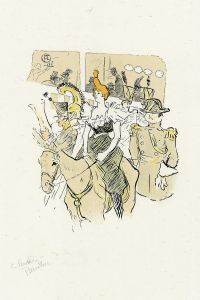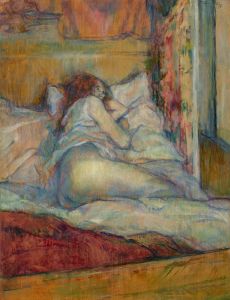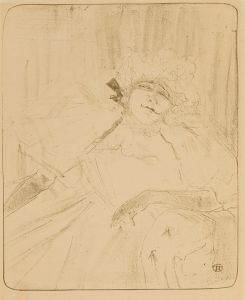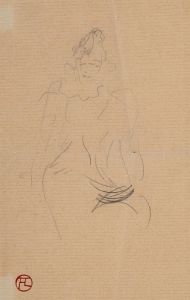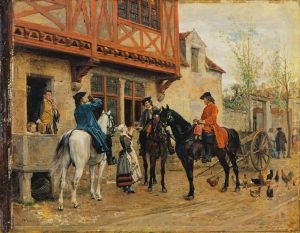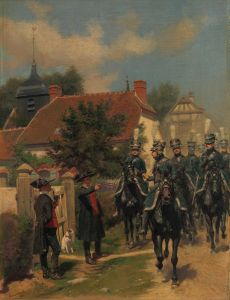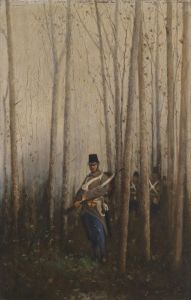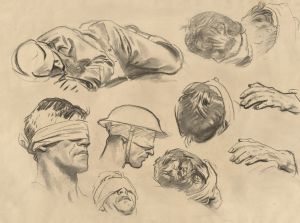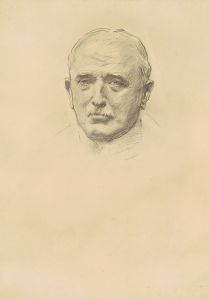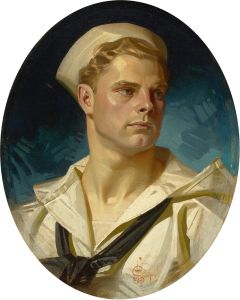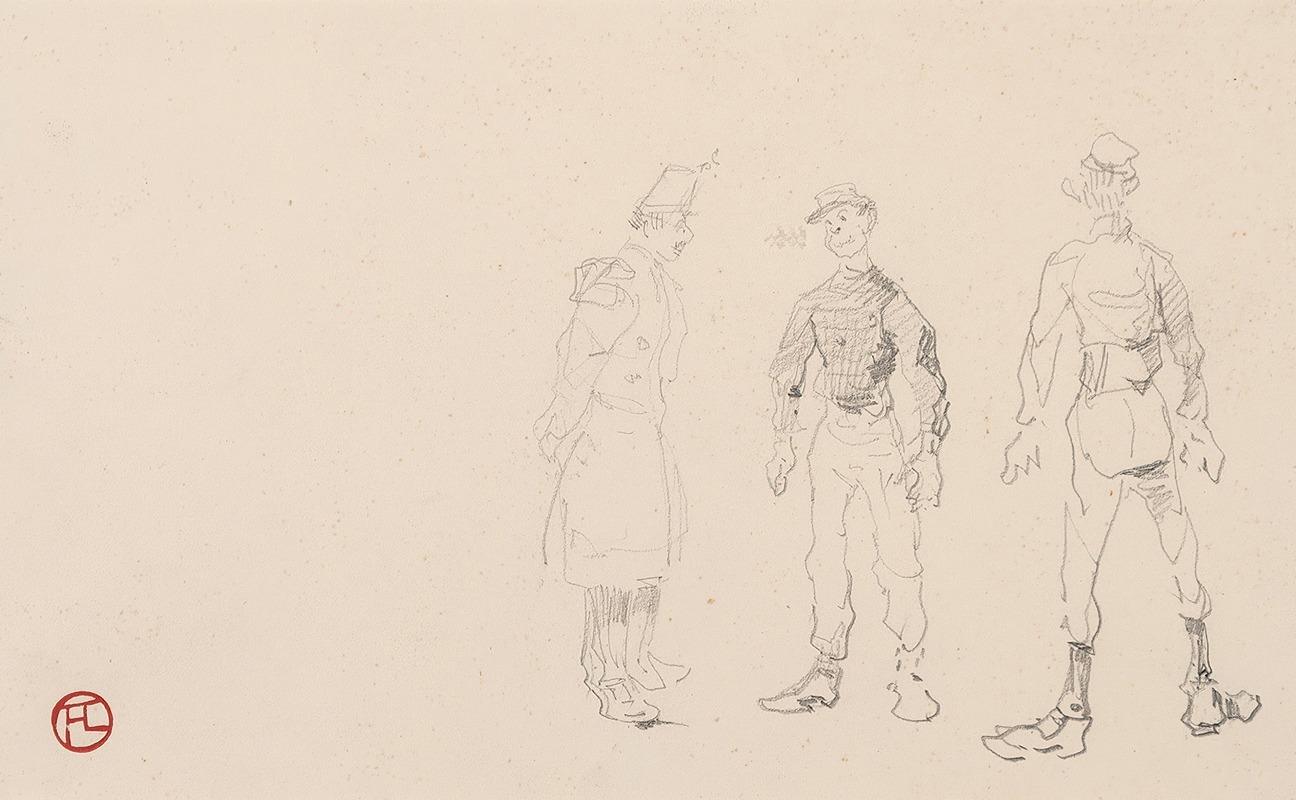
Soldats
A hand-painted replica of Henri de Toulouse-Lautrec’s masterpiece Soldats, meticulously crafted by professional artists to capture the true essence of the original. Each piece is created with museum-quality canvas and rare mineral pigments, carefully painted by experienced artists with delicate brushstrokes and rich, layered colors to perfectly recreate the texture of the original artwork. Unlike machine-printed reproductions, this hand-painted version brings the painting to life, infused with the artist’s emotions and skill in every stroke. Whether for personal collection or home decoration, it instantly elevates the artistic atmosphere of any space.
Henri de Toulouse-Lautrec, a prominent French painter, printmaker, and illustrator, is best known for his depictions of the bohemian lifestyle in late 19th-century Paris. While his most famous works often capture the vibrant nightlife of the Montmartre district, Toulouse-Lautrec also explored various other themes and subjects throughout his career. One such work is "Soldats" (translated as "Soldiers"), which reflects his interest in capturing different facets of life and society.
"Soldats" is a lesser-known piece by Toulouse-Lautrec, and as such, there is limited information available about this specific work. However, it is consistent with his broader oeuvre, which often included observational studies of people in various settings. Toulouse-Lautrec had a keen eye for detail and a unique ability to convey the essence of his subjects with minimalistic yet expressive lines. His works are characterized by their dynamic compositions and the use of bold colors, which bring his subjects to life.
Toulouse-Lautrec was born into an aristocratic family in 1864 in Albi, France. Despite his noble lineage, he chose to immerse himself in the artistic and cultural underworld of Paris. His physical disabilities, resulting from congenital health issues and accidents in his youth, may have influenced his perspective and choice of subjects, often focusing on the marginalized and overlooked aspects of society. This empathy and understanding are evident in his portrayals of soldiers, capturing their humanity beyond their military roles.
The depiction of soldiers in art has a long tradition, often reflecting the political and social climate of the time. Toulouse-Lautrec's approach to such subjects would likely have been influenced by his personal experiences and the broader context of late 19th-century France, a period marked by military conflicts and societal changes. His portrayal of soldiers would have been less about glorifying military exploits and more about exploring the human condition, a theme prevalent in much of his work.
Toulouse-Lautrec's artistic style was heavily influenced by the Impressionists and Post-Impressionists, as well as by Japanese woodblock prints, which were popular in Europe at the time. These influences are evident in his use of color, composition, and the emphasis on capturing fleeting moments. In "Soldats," as in many of his works, Toulouse-Lautrec likely employed these techniques to convey the immediacy and emotion of the scene.
While specific details about "Soldats" are scarce, it is important to place this work within the broader context of Toulouse-Lautrec's artistic legacy. His ability to capture the essence of his subjects with empathy and insight has left a lasting impact on the art world. Toulouse-Lautrec's works continue to be celebrated for their innovative style and their poignant exploration of the human experience.
In summary, "Soldats" by Henri de Toulouse-Lautrec is a testament to the artist's skill in portraying the complexities of human life. Although detailed information about this particular work is limited, it reflects Toulouse-Lautrec's broader artistic themes and his unique ability to capture the spirit of his subjects. His contributions to art remain influential, offering a window into the vibrant and multifaceted world of 19th-century Paris.






